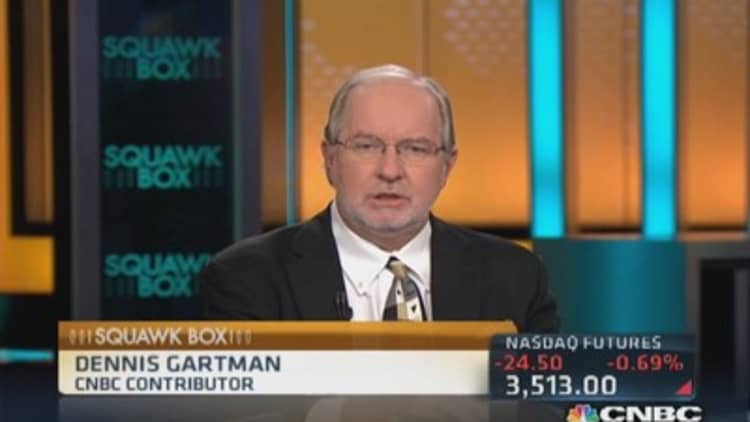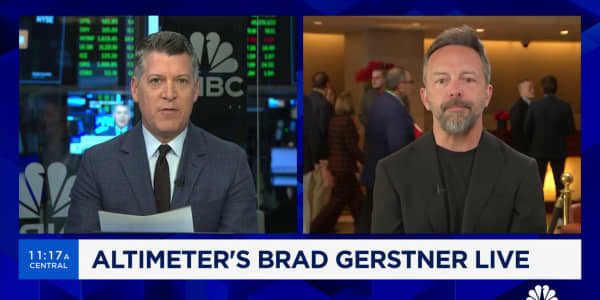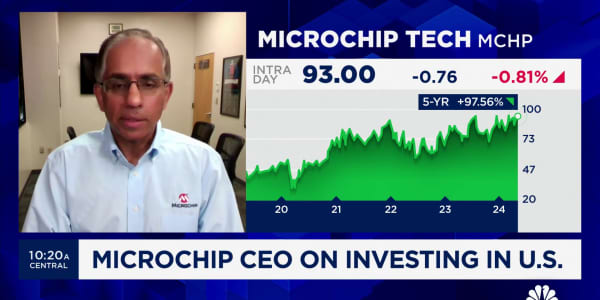An ominous sign in the bond markets could be signaling even more trouble in stocks.
Government bond yields are flirting with a phenomenon called the "death cross" in which the short-term average of the 10-year Treasury yield is about to cross below a longer-term measure.
Though there's no guarantee of what it might mean, in the past several years the Cross has formed four times and three of those occasions saw substantial equity selloffs.
The September 2007 event preceded a historic high just before the financial crisis calamity, or "probably the biggest risk-off shot-across-the-bow possible," in the words of technical strategist Abigail Doolittle at Peak Theories Research. The market, though, set a precrisis record high a month later.

Read MoreFixed-income primer: Learning the ABCs of bonds
In September 2008 the cross came around the time Lehman Brothers collapsed and set off an even more aggressive equity market collapse. In June 2010 the euro zone sovereign debt crisis triggered another cross, while a year later a cross set the stage for a steep market correction and a near collision with a bear market.
In the current environment, the 10-year yield has slid to around 2.70 percent after briefly topping 3 percent in late 2013 and early 2014. Wall Street strategists had been expecting the benchmark note to continue creeping higher as expectations grew that the Federal Reserve would begin charting a course toward tighter monetary policy.
However, the first quarter saw an uneven series of economic data, capped off with Friday's solid-but-not-spectacular nonfarm payrolls report for March that has led to some market misgivings. High-momentum tech stocks have been selling off, while first-quarter earnings season begins this week amid expectations that companies will show little if any profit growth overall.
Doolittle said the converging factors set up for a potentially bearish backdrop.
Read MoreA 10% to 20% correction is coming: Ron Insana
"It tells us that the bond market may not believe that the Federal Reserve will be able to stay on its new 'hawkish' course," she said in a recent report for clients. "More practically, it may mean that the bond market does not think the Fed will be raising rates around this time next year and it may even suggest that bond investors think the Fed will have to stop its taper or even add back to QE-Infinity at some point."
Other traders noted Monday that while the 10-year threatens a death cross, so does the yield curve—the difference between yields of different bond maturities—for the five-year note and 30-year bond.
The key caveat, of course is whether all the current trends persist. Doolittle noted a near-cross in May of 2013, which she predicted then would lead to a sub-1 percent yield on the 10-year. However, Fed comments shortly thereafter that it would begin unwinding its monthly bond-buying program triggered a rise in yields.
The consequences for equity investors could be substantial.
Read MoreGravity hits highflying tech stocks
"First we need to see if a death cross takes place in the 10-year yield and then if it does, I would say there's pretty good chance we will see the equity markets correct by at least 20 percent and something that would prove 2013 a false initial reaction," Doolittle said.
Indeed, there seems at least a growing consensus that the market has drawn nearer to a long-awaited correction.
Even strongly bullish Piper Jaffray—with a 2,100 price target for the S&P 500 in 2014—believes the trend in yields is signaling something is afoot.
"We suspect any near-term weakness in the benchmark 10-year bond yield may temporarily temper fund flows into equity funds," Craig Johnson, technical market strategist at Piper Jaffray, said in a note. "We remain secular bulls on the broader equity market. However, over the near-term we suspect some seasonal weakness is starting to unfold."
—By CNBC's Jeff Cox






